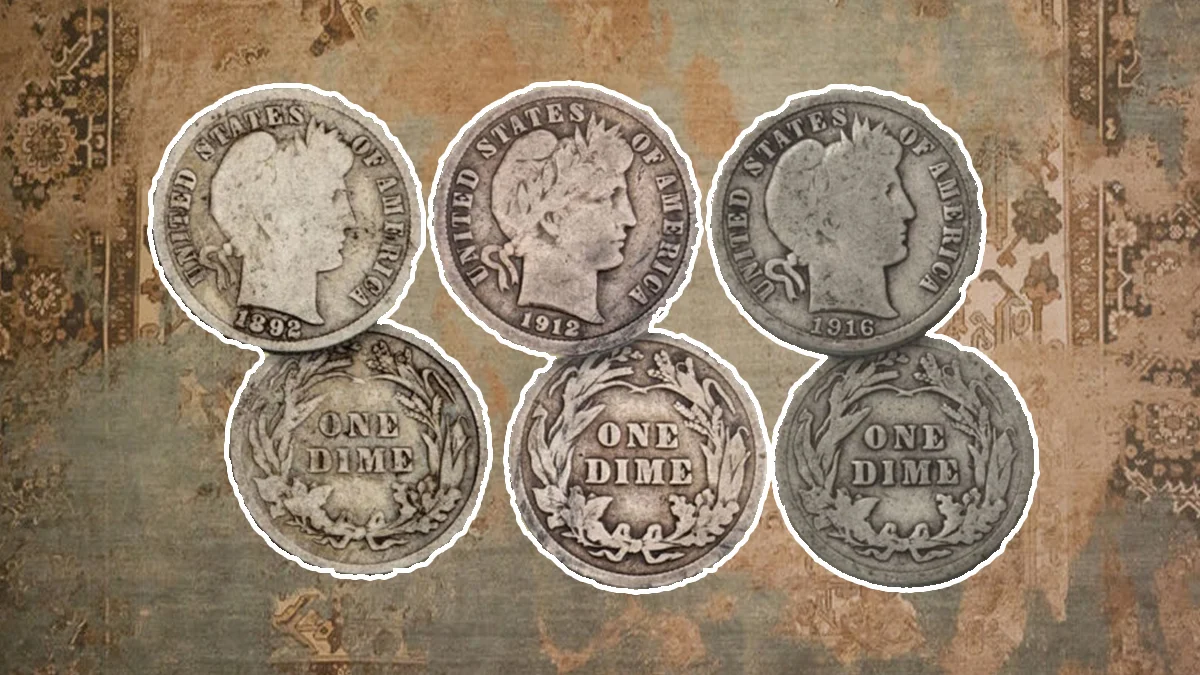
Grading a Barber dime is an important skill and it allows collectors and appraisers to recognize subtle differences in coin condition that can dramatically impact value. From mint luster to toning and abrasions, every detail counts, especially when examining used coins or those with rare minting errors. Even a small difference can represent hundreds of dollars. Professional graders spend years mastering these skills, honing their ability to spot these small but important differences.
Grading Standards and Tools for Barber Dimes
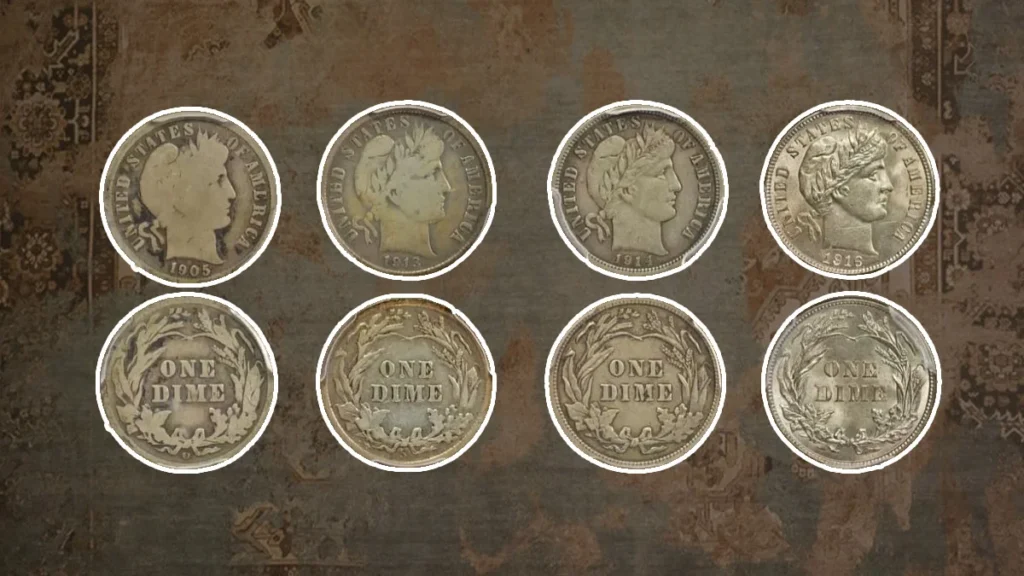
For beginners, grading coins that have circulated is relatively simple compared to considering mint-state dimes, which need a more trained eye. Here are the steps and tools essential for accurate grading:
Proper Lighting
A bright light source is essential. Many collectors use a 75-watt bulb positioned on a table for optimal lighting. Bright white LED bulbs are also effective, as they allow collectors to see fine color variations, tiny scratches, and minting errors that are difficult to detect with regular lighting.
Magnifying Glass
A quality magnifying glass with a 5x to 8x magnification range is best for spotting important details. Magnifications lower than 5x usually miss important nuances, while those above 8x can be impractical for grading purposes.
Uncirculated vs. Circulated Coins
Determining if a Barber dime has been circulated is the next step. Look closely for any signs of wear on high points; minimal wear may indicate an About Uncirculated (AU) condition. For more accurate grading, consult the Sheldon Scale, a widely used grading scale that helps differentiate coin conditions with percentages.
Using the ANA Grading Standards
Since the grading scale is not proportional, the American Numismatic Association (ANA) standards provide detailed descriptions for each grade. For example, the difference between VF 20 and EF 40 is less pronounced than between EF 40 and MS 60. The ANA guidelines provide invaluable understanding for differentiating these subtle variances in coin conditions.
Grades and Conditions of Barber Dimes
Barber dimes, minted from 1892 to 1916, show the work of Charles Barber, but these coins were usually ignored by collectors. For those interested in this series, here are the grading categories below:
About Good (AG)
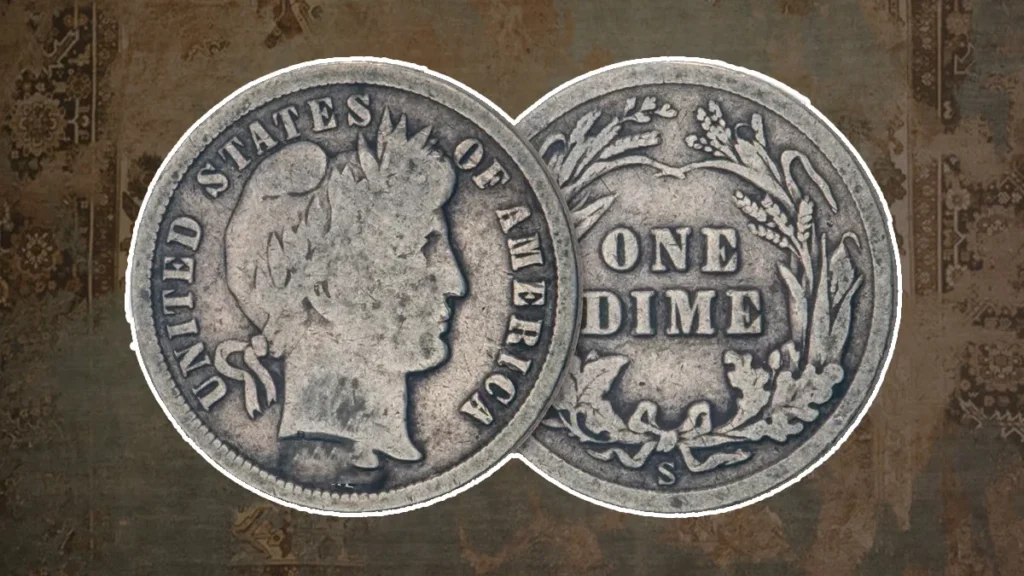
These dimes are heavily worn with some recognizable details, making them non-collectible for most enthusiasts.
- Obverse: The edge integrates into the inscriptions, and Liberty’s head is just an outline. The date is partially worn but remains visual.
- Reverse: The wreath’s edges are light and integrate with the edge, while the denomination and mint mark are legible.
Good (G, G4, G6)
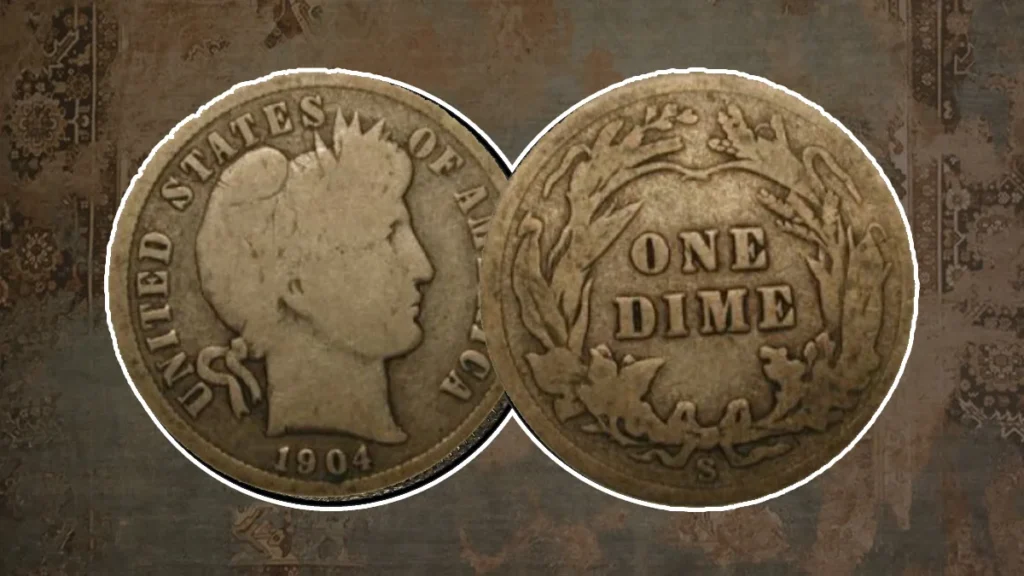
Considered the lowest collectible grade, Good-condition coins are worn but have a complete edge and bold design, making them eligible for entry-level collections.
- Obverse: Liberty’s design and the coin edge are visible, though the band with “LIBERTY” is illegible.
- Reverse: The wreath edges are worn but still recognizable, with main features like grain stalks and corn showing limited detail.
Very Good (VG, VG8, VG10)
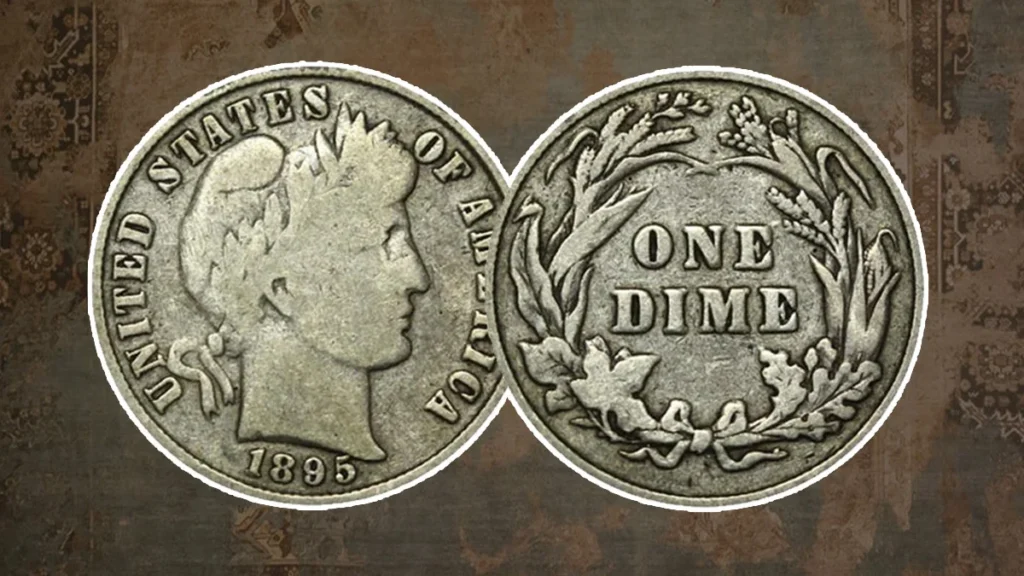
This grade is described by at least three visual letters in “LIBERTY.”
- Obverse: The Liberty head is faintly detailed, and the word “LIBERTY” has three readable letters. The edge is complete.
- Reverse: Minor details in the wreath are visible, though grain stalks and corn seem flat. The bow design is real.
Fine (F, F12, F15)
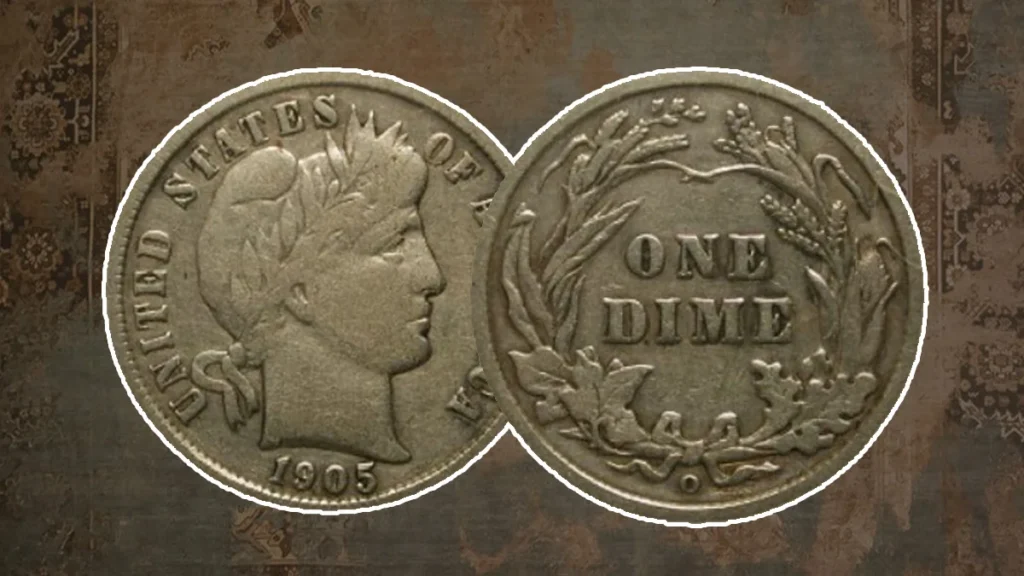
Coins in Fine condition show shallow but complete designs of major design elements.
- Obverse: All letters in “LIBERTY” are visible, though some may lack their bottom lines. More laurel wreath details are apparent, though worn.
- Reverse: The denomination is clear, while the wreath and leaves are described but smooth.
Very Fine (VF, VF20, VF25, VF30, VF35)
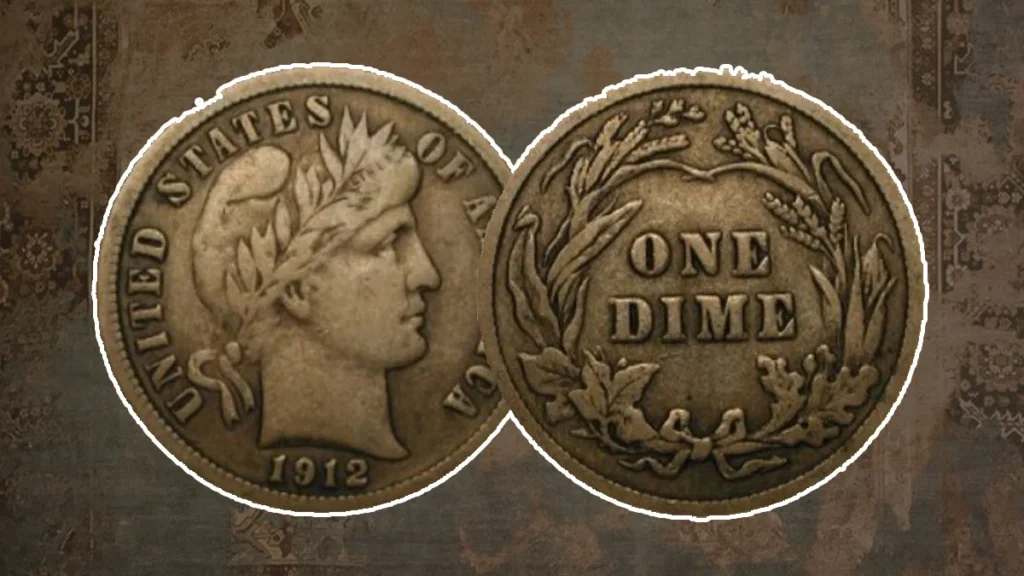
In this grade, details on both sides are well-defined.
- Obverse: Liberty’s profile shows great detail, with all letters in “LIBERTY” being visual. The laurel wreath and headband are different.
- Reverse: Lower leaves show wear, but corn seeds and bow design remain visible.
Extra Fine (EF40, EF45)
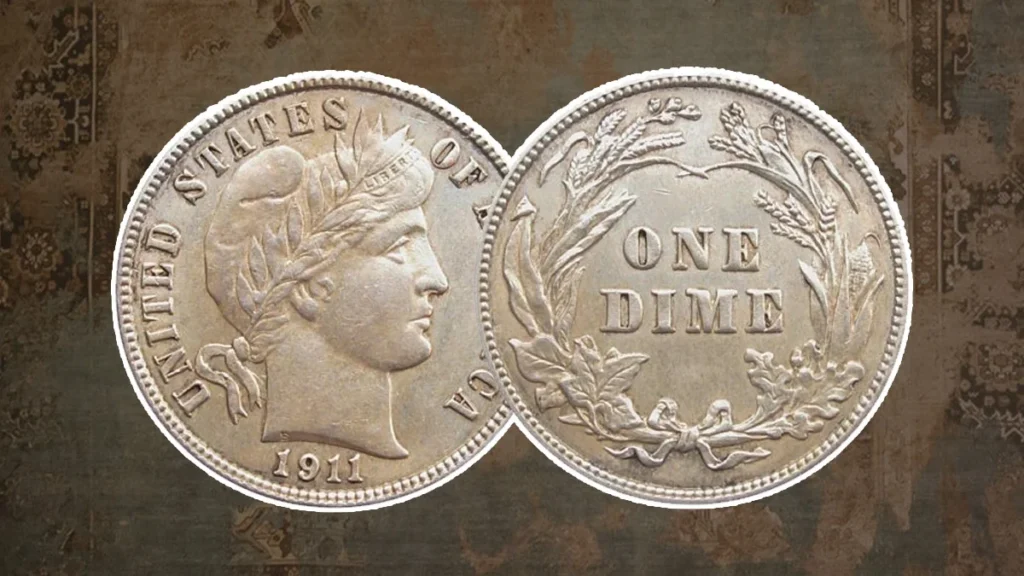
These coins have minimal wear with visible, well-defined details, though mint luster is typically absent.
- Obverse: The headband with “LIBERTY” is complete, and Liberty’s forehead and hair show deep. Slight wear is visible on the cheek and leaves.
- Reverse: Wreath and denomination details are distinct, with some minor wear on high points.
About Uncirculated (AU50, AU55, AU58)
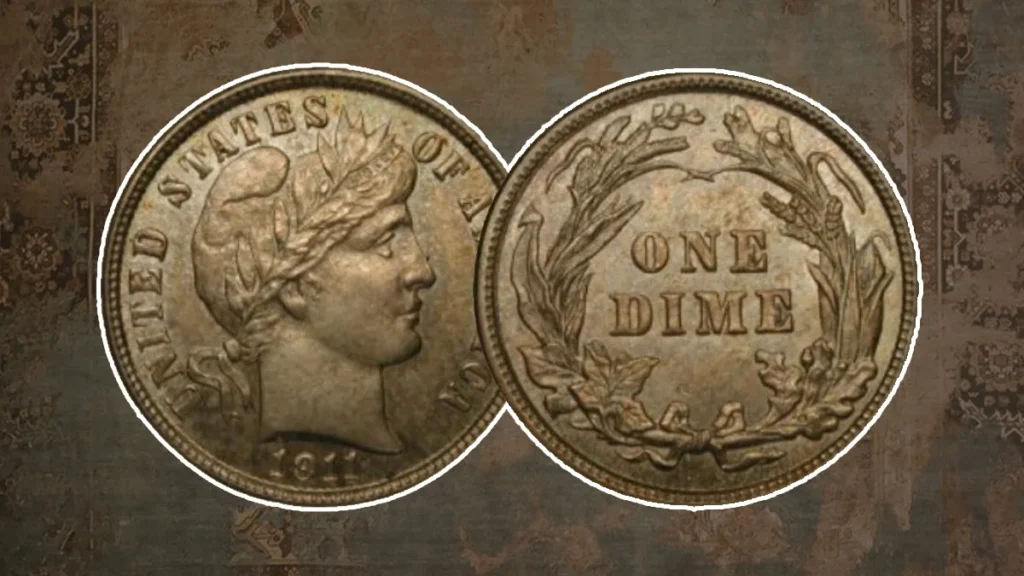
These coins show light wear, especially on the highest points, with about 75% mint luster intact.
- Obverse: Mint luster is clear, with minimal wear on Liberty’s cheek and forehead.
- Reverse: Slight wear on the ribbon bow and grain tips, but the overall formation is sharp.
Mint State (MS60 to MS70)
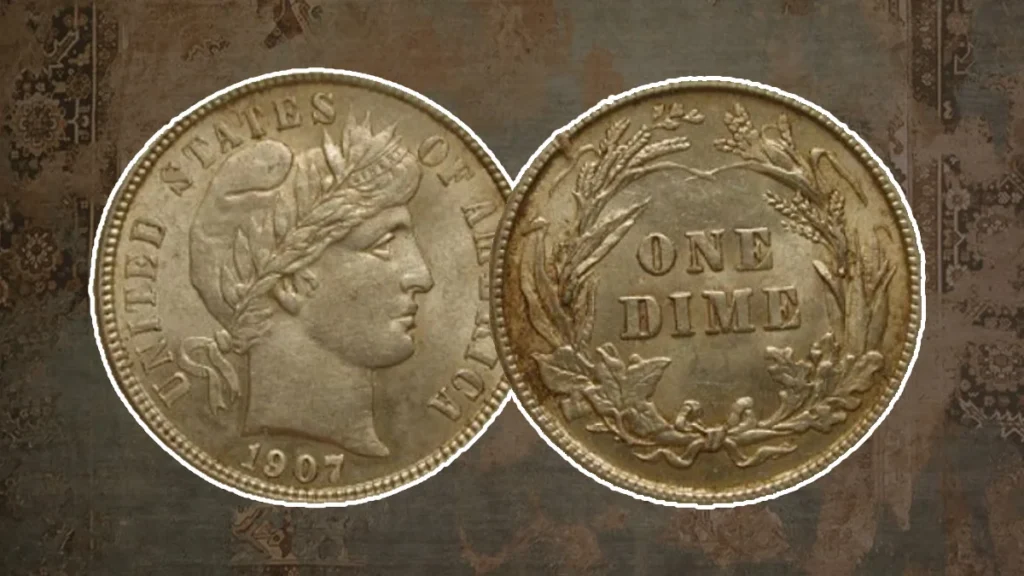
Mint State dimes are pristine, with no wear on high points and consistent surface texture. However, slight abrasions or “bag marks” from packaging can seem.
Coin Pricing and Resources
Grading is important for determining market value, with well-preserved dimes or those with rare errors commanding significantly higher prices. Here are some help for estimating coin values:
- Coin Values – Monthly supplement in Coin World
- Coin Prices – Monthly by Krause Publications
- Red Book – A Guidebook to United States Coins by R.S. Yeoman
- PCGS Coin Price Guide – Online guide
While any collector can grade a coin, only trained experts can discern subtle variations that greatly impact a coin’s value. Remember, never clean your coins, as this decreases their worth. Coins that are cleaned or otherwise bad will generally sell for less than their graded counterparts.
Related Post –
Bottom Line:
Grading Barber dimes is a skill that develops with experience and knowledge. Though collectors can consider their coins, expert graders can identify small differences that influence value. Taking time to study the fine details, lighting, and proper magnification ensures the most accurate assessment, ultimately making grading an essential part of coin collecting.
